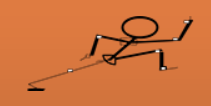Headache Physiotherapy

Scott St Physiotherpy’s clinicians are experts in diagnosing and treating headaches. Headaches can be incredibly debilitating, impacting your ability to work, exercise and socialise. These days we all live busier lives which comes with extra stress. This can lead to common headaches like tension type headaches and cervicogenic headache, but these aren’t the only headache types.
The most recent International Classification of Headaches Disorders can be read here. This is a detailed document outlining ALL headache diagnoses.
Ultimately the effectiveness of headache treatment requires accurate differential diagnosis. If the diagnosis is not correct, your headache treatment will not be successful, especially over the long term.
What types of Headaches are there?
Presentations of headache here at Scott Street Physiotherapy generally fall into 6 probable causes.
Tension type headaches
Sustained inappropriate muscle tension or muscle habits lead to the muscles contributing to pain around the head and neck that are reported as headache. Upper chest breathing patterns, chronic scapulae elevation with arm movement, eye straining and tongue and mouth habits can be contributors. Treatment usually involves reversal of these behaviours.
Cervicogenic headaches
This can relate to upper cervical vertebral causes of headache and/or muscular attachments to the cervical spine contributing to headache. This includes active movement deficits, joint irritation, muscle holding patterns or as simple and sleeping on stomach at night. Treatment involves addressing the underlying cause.
Headaches secondary to Shoulder Multidirectional Laxity
This is a tension type headache. The precursor is scapulae habits used to control the instability. This is not conscious, rather evolves over time. People with these headaches often spend a fortune on endless promises of varied and ineffective treatments including neck manipulation from Chiro/Osteopaths/Physios, massage, cupping, acupuncture - all unhelpful for this presentation. These treatments do not address the cause and give vague temporary relief for a day or two then the headaches starts again. Treatment requires improving the condition of the rotator cuff muscle to address the shoulder laxity.
Temporomandibular joint headaches (jaw pain)
Temporal headache and facial pain are strong indicators that the headache reported is temporomandibular joint (TMJ) in origin. Clenching, bruxisms, jaw protruding, inappropriate occlusion, tongue rolling, tongue pushing are some of the background habits of TMJ origin headaches. Treatment depends on the subcategory of temporomandibular dysfunction (TMD).
Vestibular Hypofunction
Motion intolerance can contribute to headaches as neck bracing patterns and reducing neck movement are strategies used to mitigate imbalance changes with or without nausea. The vestibular problem is treated, not the cervical tension issue. Read more about it here.
Other
With differential diagnosis we need to be aware of other contributors to persistent/recurrent headache. Some conditions are treatable by a Physiotherapist and others are not. Migraine is not treatable with Physiotherapy as well as headaches caused by sinusitis, vasculitis, brain tumours, encephalitis, abnormal ventricular draining, Arnold Chiari malformation, aneurysms, stroke/TIA and many others. Thus, it is important to rule out these headaches.
Vestibular Migraines
Vestibular migraines may have a vestibular hypofunction component that persists between migraines, especially when chronic and episodic. In this case, we can treat the intermittent vestibular hypofunction but not the migraine. This hypofunction may feel like persisting low grade headache or motion intolerance despite the migraine having passed.
If you are struggling with headaches with, or without neck pain, book in with us today for an assessment and treatment.
